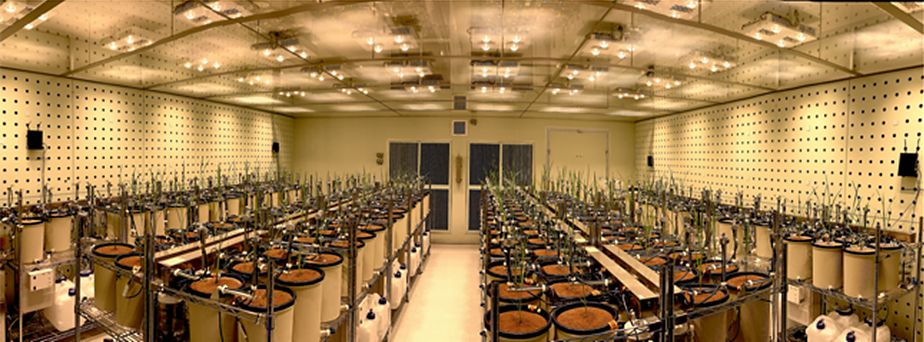National Agriculture and Food Research Organization (NARO), Kazusa DNA Research Institute, and Tecs Inc. has developed the world's first automatic irrigation system that arbitrarily controls soil moisture for each pot by supplying water from the bottom of the pot. Drought condition that occurs in the natural environment can be reproduced by this system in an indoor environment. In addition, it is possible to constantly monitor the temperature and humidity, illuminance, soil moisture and soil temperature of each pot. It is expected that it will be possible to realize the expected adverse environment in the future such as drought and crop development in anticipation of the future global environment by utilizing this system. This system can also be utilized diversely, such as collecting data for precision agriculture.
Overview
We have developed a pot system "iPOTs (Internet of Things-based pot system controlling optional treatment of soil water condition for plant phenotyping under drought stress)" that can automatically control the water condition of soil in an indoor environment by fusing IoT technology and sensor technology.
Drought and soil devastation are progressing in agricultural lands around the world due to the changes in the global environment caused by global warming. The cultivation environment around the world is changing to an unprecedentedly severe environment due to heavy rains, flooding of crops due to high tides, and damage caused by salt damage. Even in Japan, the light rain that occurred in Hokkaido this year was an example. Crop development that can quickly respond to such drastic change in cultivation environment is demanded all over the world. However, generally crops are evaluated in the present weather and cultivation environment in crop development sites. Hence it is a difficult task to rapidly develop crops adapted to the future expected cultivation environment.
The iPOTs is the world's first irrigation system that can mimic the drought in the natural environment by automatically supplying and draining water from the bottom of the pot. This system enables us to reproduce drought and flood conditions, which are expected to cause serious stress in the future, in each pot in an indoor environment. Also, its utilization is possible to design crops that are suitable for future adverse environments. The water level sensor placed in each pot controls the soil moisture individually by remote control. This system allows us to even develop drought and flood resistant crops concurrently/parallelly by means of reproducing drought and flooding conditions in adjacent pots and cultivate crops.
The official commercialization of iPOTs is not yet decided at present, but we would like to consider further improvements and commercialization so that it can be widely used by other researchers and private companies in the future.
Publication
Numajiri Y., Yoshino K., Teramoto S., Hayashi A., Nishijima R., Tanaka T., Hayashi T., Kawakatsu T., Tanabata T., Uga Y. (2021) iPOTs: Internet of Things-based pot system controlling optional treatment of soil water condition for plant phenotyping under drought stress. The Plant Journal https://doi.org/10.1111/tpj.15400
Reference:
a) Teramoto S., Tanabata T., Uga Y. (2021) RSAtrace3D: robust vectorization software for measuring monocot root system architecture. BMC Plant Biology, 21: 398.
b) Teramoto S., Takayasu S., Kitomi Y., Arai‐Sanoh Y., Tanabata T., Uga Y. (2020) High‐throughput three‐dimensional visualization of root system architecture of rice using X‐ray computed tomography. Plant Methods, 16: 66.

Cultivation of rice using iPOTs installed in an environment control room
For Inquiries
Contact: http://www.naro.affrc.go.jp/english/inquiry/index.html




